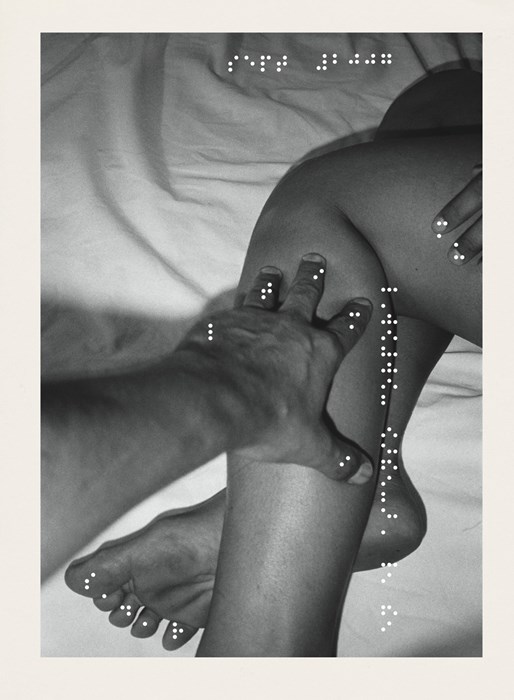Gerardo Nigenda was a blind photographer. Born in Mexico in 1967, he lost his sight at the age of 25. He took up photography at 32, when documentary photographer, Mary Ellen Mark, gave him a Yashika pocket camera. A new book entitled The Blind Photographer features the work of visually impaired artists from South America and Europe and is available now through Redstone press. Nigenda’s work appears in the book.

Nigenda’s work in the book features black and white images of the female form where he is reaching out to feel what is in front of him. He would then use braille to provide a literal description of what the image was depicting, and as his work evolved the text would describe what had led him to take the photograph. The braille is literally punched into the photograph paper so it can be seen and read.
“An erotic visual poem, in which braille text is punched into monochrome images of bodies and faces” (from The Blind Photographer)
This body of work by blind photographers shows how the world is perceived by people without sight. The role of these photographers is defined in the short film ‘Sight of Emotion,’ which details the lives of Nigenda and other blind photographers in Mexico.
Gerardo Nigenda died in 2010. Initially after losing his sight he managed the braille books in his local library and went on to teach maths, computer science and braille before he discovered photography.







